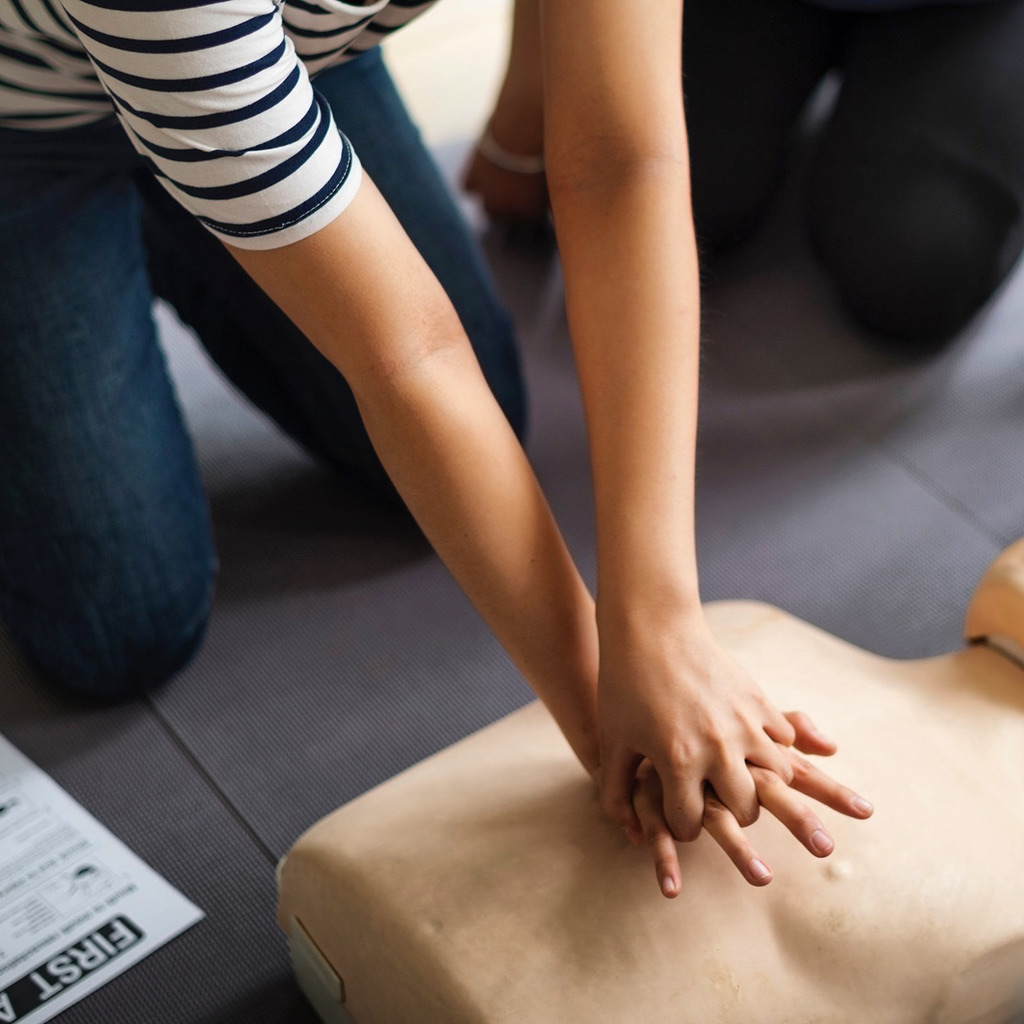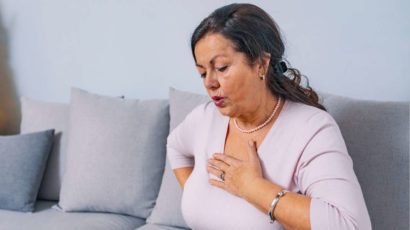Real life tales of CPR and first aid. We may have heard that giving Cardio-Pulmonary Resuscitation (CPR) to someone who has stopped breathing and whose heart has stopped beating could save their life. But far too many of us do not know how to act in a life-threatening emergency when rapid decision making is essential. To put it into context, there are about 6000 people who have a sudden cardiac arrest every year in Switzerland. Only 600 of them survive. This is exactly when having a basic knowledge of First Aid and CPR could make a difference. The entire medical team at HealthFirst is highly trained in teaching these important skills. They have had first-hand experience of life and death situations. Two of our staff explain how needed to use their head and their hands to step in and act confidently.
Mags, who trained as a Midwife in the UK, explains what happened on a normal day.
“I had to give CPR to an elderly woman who collapsed at the side of the road. She was surrounded by a large group of people most of whom were quite panicked not knowing what to do. An ambulance had been called. Someone was already giving hands-only CPR but everyone I asked had lost track of time and didn’t know how long she had been doing this. I recovered my HealthFirst face shield from my car keyring and used it to give ventilation breaths. The woman giving CPR and I continued to work together giving CPR with ventilation breaths until the ambulance arrived approximately five minutes later. The woman was defibrillated at the scene then taken to a local hospital. Even though a large group of people had gathered around the scene, only me and one other woman knew how to give CPR.”
Amanda, who trained as a Nurse in the UK, explains what happened on a night-time family hike in Switzerland.
“I heard a groan behind me and turned to see that a man had slumped down onto his back on the path completely blocking it. I assumed that he had twisted his ankle and fallen but in the sweeping light from my head torch, it was quickly obvious that it was something more serious. So I spoke to him, no answer, shook his arm, nothing, felt for a pulse, (no longer taught as part of initial assessment) no pulse, felt for another pulse, still no pulse.

What are agonal gasps?
It was too dark to see if there were signs of breathing but I heard agonal gasps and knew CPR was necessary. But here, on this path I could not actually get beside him. I stood for some seconds in limbo not quite able to comprehend that this was ‘it’. We were in the middle of nowhere, had no phone, no equipment, no colleagues. I couldn’t even see the person I was trying to help except for brief flashes from the torch.
The group leader and I managed to carry/drag the man along the path to where it widened and flattened out. Only then could I kneel at upper body level and start chest compressions. A message was sent by flashlight signals across the valley to the other half of our original group who had taken the more advanced route. This group had the experienced mountain guide with them who was carrying a phone and presumably would have known CPR technique. No help to the ‘B’ group here and now though! One lady came forward – she had a mobile phone and was able to get reception and call for REGA. Miracle! A surge of relief, help is coming. I was not aware of how much time had elapsed since the collapse, but it was too long.
My patient’s skin was cold and clammy. There were long intervals between agonal breaths and my fingers slipped on his skin as I had to keep reopening his airway. I was unable to see if his chest was rising with rescue breaths, but I was confident that my chest compressions were hard and fast. Once I knew back-up was coming, it felt like an automaton – I knew that I could keep going.
The helicopter arrives
I also knew that excellent CPR technique is of vital importance to ensure oxygen is circulated and reaches the brain. Prolonged periods of providing rescue breaths and chest compressions becomes very tiring and can cause rescuer technique to deteriorate, so I asked the guide to help. It was easy to instruct him in how to provide chest compressions. I continued with the rescue breaths.
It seemed a long, long while before the wings of a helicopter could be heard in the distance. As it approached, I could see in it’s floodlights our whole weary group watching the spectacle, including my husband, sons, and friends.

Paramedics ran towards us and I continued CPR as they placed electrodes on the man’s chest and connected a defibrillator. A weak trace on the monitor could be seen, the paramedic confirmed that there was ‘cardiac output’. It was such a relief to hear those words as I stepped back and let the professionals take over.”
Joining one of our Saving Lives: CPR and Emergency First Aid courses can equip you with life-saving skills.
Find out the upcoming course dates here.
Contact us for more information if you are not sure what course is right for you.





